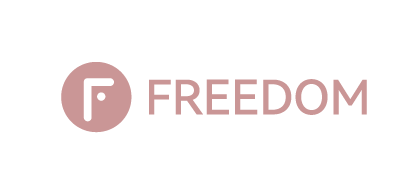Adidas is one of the world’s top sports brands. The company operates in over 120 countries. It serves millions of athletes and fitness fans worldwide. Beyond shoes and clothes, Adidas now makes fitness accessories. These products fit modern active lifestyles.
The Growing Demand for Adidas Yoga Mats
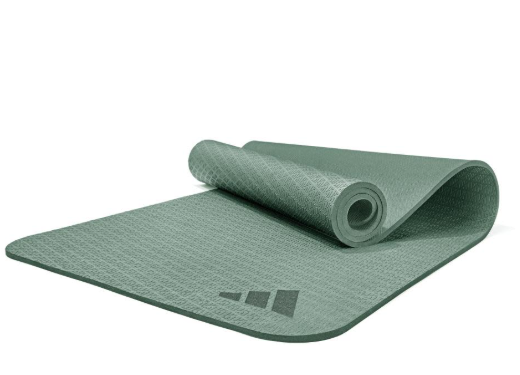
Adidas yoga mats have become popular among yoga fans and fitness lovers in recent years. I see several reasons for this growth:
-
Brand Trust: People link Adidas with quality, performance, and lasting products
-
Design Innovation: Modern looks meet practical features. This mix appeals to style-focused yogis
-
Market Expansion: The global yoga mat market keeps growing. Adidas aims to be a premium choice
Adidas does not own yoga mat factories. The company works with contract manufacturers. These outside facilities make yoga mats that meet Adidas quality standards. This model lets Adidas focus on design. Experienced factories handle the production work.
Primary Production Centers
China is the main hub for Adidas yoga mats. I’ve found that Chinese factories have decades of experience with foam products and fitness gear. They use advanced equipment. They have skilled workers. The region has complete supply chains. Raw material suppliers sit near processing plants and shipping services. This cuts costs. It speeds up production.
Vietnam is now another key location. Many sports brands moved production here recently. Vietnamese factories offer lower labor costs. They have modern facilities. The country improved its manufacturing infrastructure over time. Local factories now meet global quality standards. Vietnam gives good access to Southeast Asian markets.
Taiwan produces premium yoga mats for Adidas. Taiwanese makers focus on quality materials and precise construction. These facilities handle specialty lines. They make limited editions. Taiwan factories have strict quality control. They test materials at each step. They monitor every production phase.
The exact factory making your mat depends on the product line. It depends on the market. Adidas shifts production between partners. This depends on capacity, costs, and timing. You can find the manufacturing location on product labels. Check the packaging information.
Quality Control and Standards
Adidas uses strict quality rules at all its factories. These rules make sure every yoga mat works well and stays safe. The company checks products at many points during production.
Manufacturing Quality Protocols
Each factory follows Adidas production rules. I’ve found these key control steps happen at all locations:
-
Material Verification: Raw materials get tested before production starts. Suppliers must give proof documents. Factories check foam density, texture mix, and chemical content.
-
In-Process Monitoring: Quality inspectors check products during production. They measure mat thickness at several points. They test surface grip patterns. They look at edge finishing.
-
Final Product Testing: Finished mats go through performance checks. Tests measure slip resistance, durability, and size accuracy.
-
Batch Sampling: Random samples from each batch go to Adidas quality labs. These get extra checks before shipping.
Certified Materials and Safety Standards
Adidas puts safe materials first in yoga mat design. The company stopped using old PVC formulas. Modern Adidas yoga mats use safer options:
PVC-Free Construction: Most new models don’t use polyvinyl chloride. This fixes health worries about phthalates and chlorine. I suggest checking product specs for material details. Premium lines use TPE (thermoplastic elastomer) or natural rubber.
Non-Toxic Certifications: Factory partners get materials with third-party safety proof. Common standards are:
– OEKO-TEX certification for textile parts
– REACH rules (European chemical safety)
– California Prop 65 rules for US markets
Eco-Friendly Material Options: Some product lines use green materials. These include recycled foam, natural cork tops, and materials that break down over time. Materials differ by mat model and price.
End Plastic Waste Initiative Impact
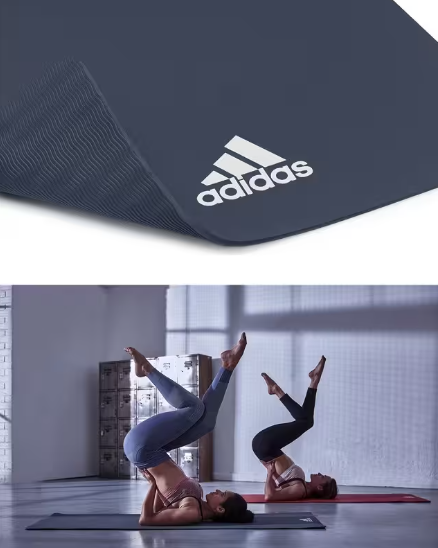
Adidas joined the “End Plastic Waste” program in 2019. This program changes yoga mat production in these ways:
Recycled Content Integration: New yoga mat models use recycled materials when possible. Adidas partners with makers to create foam from used plastic waste. The amount changes by product line. Premium models now have 5-15% recycled content.
Packaging Reduction: Factory partners get rules to cut plastic packaging. Many yoga mats now ship in recycled paper wrap instead of plastic sleeves. Store packaging uses recyclable cardboard.
Manufacturing Waste Management: Partner factories run waste cutting programs. They track scrap rates. They create recycling steps for foam scraps. Some plants turn production waste into other products like packaging or protective padding. Based on my research, this helps cut total waste by a meaningful amount.
Supplier Requirements: Adidas asks factory partners to record green efforts. Factories send yearly reports on energy use, water use, and waste removal. This makes everyone responsible in the chain.
The company sets growth goals for each program phase. Public reports show Adidas wants 100% recycled polyester in all products by 2024. Yoga gear follows the same timeline. I believe material tech keeps getting better as recycling methods improve. This means future mats will likely use even more recycled content while keeping the same quality.
Comparison with Other Brands
The yoga mat market has many yoga brands. Each one uses a different way to make their products. Adidas competes with several top-tier makers. I’ll show you how these brands compare in production, materials, and value.
Manufacturing Model Differences
Adidas uses OEM partnerships across China, Vietnam, and Taiwan. This gives them flexibility in production. They can adjust volumes based on demand. The brand focuses on design. Their partners handle the manufacturing.
Manduka operates in a unique way. They work with fewer factories. Most production happens in their partner facilities in China and Germany. Manduka controls more of the production process on their own. They keep a close watch on each manufacturing step.
Liforme takes a focused approach. They manufacture in the UK. This keeps their production close to design teams. UK manufacturing means higher labor costs. These costs show in retail prices. But quality control becomes simpler with local production.
FDM Yoga works as a professional custom yoga mat manufacturer. They run their own production facilities. As an OEM service provider, FDM makes mats for multiple brands. They handle everything from design consultation to final production. Their factories focus on custom orders and private label manufacturing.
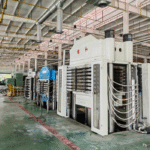
Related Reading: Who Makes Jade Yoga Mats?
Material Quality and Innovation Comparison
Different brands choose different material strategies. These choices affect performance and price:
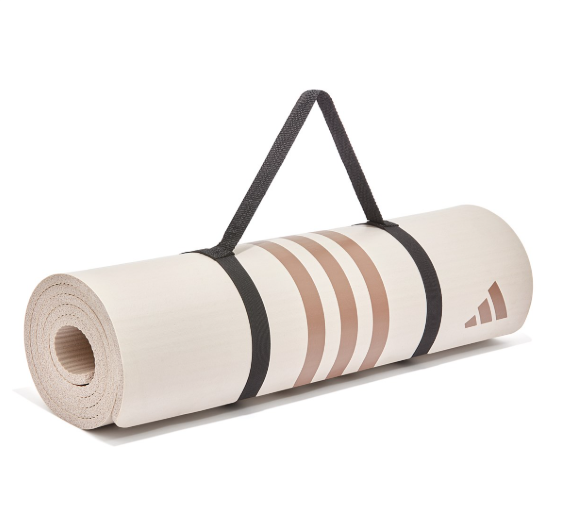
Adidas Materials:
– Uses TPE (thermoplastic elastomer) in mid-range lines
– Some natural rubber in premium models
– 5-15% recycled content in newer products
– PVC-free construction in recent releases
Manduka Materials:
– PVC in classic PRO series (high-density, different from cheap PVC)
– Natural rubber in eKO line
– Cork surfaces in some specialty mats
– PRO series lasts 10+ years based on user reports
Liforme Materials:
– Natural rubber base (harvested in a sustainable way)
– Biodegradable materials throughout
– Eco-polyurethane top layer
– No PVC, no toxic chemicals
FDM Yoga Materials:
– Wide material range (TPE, NBR, PVC, natural rubber, cork)
– Custom material formulations available
– Can match client specifications to the detail
– Source materials based on customer budget and needs
Price Point Analysis
Manufacturing location and material choices create price differences. Here’s what I found across brands:
Adidas Yoga Mats: $30-$80
– Entry models: $30-$45 (basic TPE, standard thickness)
– Mid-range: $50-$65 (better grip, recycled content)
– Premium: $70-$80 (natural rubber, special features)
Manduka Yoga Mats: $25-$140
– Begin series: $25-$35 (starter quality)
– PRO series: $120-$140 (professional grade, lifetime guarantee)
– eKO series: $70-$90 (eco-friendly natural rubber)
Liforme Yoga Mats: $140-$160
– Original mat: $140 (standard size)
– Travel mat: $100 (thinner, portable)
– XL version: $160 (extra length)
– UK manufacturing drives higher costs
FDM Yoga Mats: Variable pricing
– OEM pricing depends on order volume
– Bulk orders start around $3-$15 per mat (wholesale)
– Custom features add to base price
– Minimum order quantities needed (100-1000↑ units)
Brand Positioning and Target Markets
Each brand serves different customer needs:
Adidas targets active lifestyle consumers. They want brand recognition. They value style alongside function. Adidas appeals to gym-goers who do multiple activities. The brand works for people who want one mat for yoga and general fitness.
Manduka focuses on serious yoga practitioners. Teachers often recommend their PRO series. Studio owners buy in bulk. The lifetime guarantee appeals to people who practice every day. Higher prices attract committed yogis willing to invest.
Liforme reaches eco-conscious premium buyers. Environmental values matter most to their customers. UK manufacturing appeals to people who prefer local production. The alignment system helps students and teachers perfect poses.
FDM Yoga serves business clients and emerging brands. Yoga studios order custom mats with their logos. New fitness brands need manufacturing partners. Retailers want private label products. FDM offers the infrastructure without competing with brands.
Quality Control Standards Across Brands
Manufacturing oversight varies by brand:

Adidas Quality Systems:
– Third-party factory audits
– Batch sampling and lab testing
– REACH and OEKO-TEX certifications
– Regular factory inspections
Manduka Quality Systems:
– Direct factory supervision
– Emissions testing for all materials
– Performance guarantees (lifetime on PRO)
– Fewer factory partners means tighter control
Liforme Quality Systems:
– UK facility oversight
– FSC certification for natural materials
– Biodegradable testing
– Smaller production runs allow detailed checks
FDM Yoga Quality Systems:
– Reach manufacturing standards
– In-house testing laboratories
– Client-specific quality protocols
– Can meet multiple certification requirements
Based on my research, FDM’s flexibility helps brands create exact specifications. They test samples before full production. They adjust formulas to match client needs.
Production Capacity and Customization
Manufacturing scale creates different advantages:
Adidas produces high volumes. They make thousands of mats per production run. Limited customization for consumers. Standard product lines across markets.
Manduka runs medium-scale production. Some color customization available. Special editions release from time to time. Focus on consistency over variety.
Liforme keeps smaller production volumes. Limited product variants. Tight quality focus over mass production. Longer wait times during high demand.
FDM Yoga offers maximum customization. Logo printing, custom colors, unique sizes all possible. Minimum order quantities start around 100 pieces. Can develop new materials just for you. Production timeline depends on complexity – often 30-45 days.
I suggest considering what matters most for your needs. Brand recognition? Choose Adidas. Want a mat that lasts forever? Manduka is your best bet. Environmental concerns? I recommend Liforme. If you need custom mats for a studio or brand, I recommend FDM Yoga. They provide professional OEM services with quality control and flexibility.
Conclusion
Adidas makes yoga mats in several countries. China is the main production hub. Vietnam makes more mats each year. Taiwan creates premium lines. Adidas partners with factories instead of owning them. This gives the brand flexibility with costs and production.
I recommend Adidas if you want brand recognition at fair prices. The factories in China, Vietnam, and Taiwan make consistent quality. TPE materials work well for fitness and yoga. More recycled content shows the brand cares about the environment. Prices from $30-$80 fit most budgets.
Pick premium brands if specific needs matter more. Manduka’s China and Germany factories make mats that last 10+ years. Liforme’s UK production appeals to people who want local products. FDM’s custom options serve studio owners and new brands.
Your yoga mat choice is about more than where it’s made. It shows your values about quality, sustainability, and fair labor. Adidas makes solid mid-range mats through experienced partner factories. The brand balances performance, price, and environmental care across its production network.
I suggest trying mats in person if you can. Feel the grip. Check the thickness. Test the cushioning. Where a mat is made gives you quality clues. But your personal experience tells you if it meets your needs. The best yoga mat combines good production standards with how it performs during your practice.
